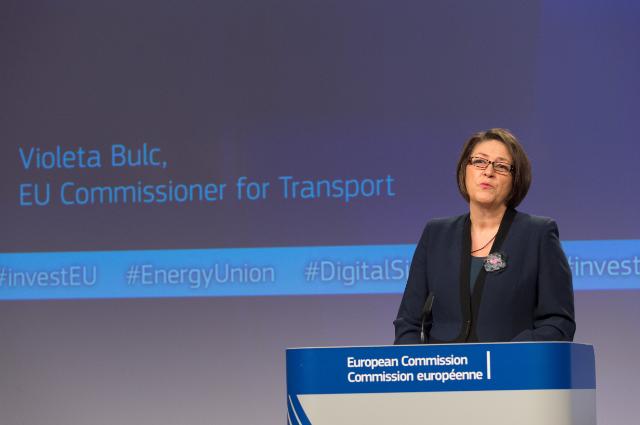This interview was originally published in the daily Dnevni avaz on 21 July 2017.
1. Has there been progress in signing the Transport Community Treaty?
As you know, in Trieste, five partners (WB countries) signed the Treaty. Despite extensive diplomatic efforts Bosnia and Herzegovina was not able to sign the Treaty on the day of the summit due to internal co-ordination issues. We expect this issue to be solved soon which would allow Bosnia and Herzegovina and sign the Treaty and join the Transport Community.
2. It has been announced that the EU has a total of 7 billion EUR at its disposal for the Western Balkans by 2020, but so far it has implemented 1.5 billion EUR. Why are these funds being spent so slowly?
The 2014-2020 budgetary allocation for the Western Balkans under the Instrument for Pre-accession Assistance is made available through annual budgets of approximately EUR 900 million. Up to 2017 (included), the Commission has prepared and adopted assistance programmes of approximately 3.5 billion EUR, on the basis of the budget available for the period 2014-2020.
As regards implementation of these programmes, the typical programme timeline is 3 to 6 years (especially for major infrastructure projects for obvious reasons) from when the funds are made available to a beneficiary. This period includes the tender procedure, implementation of activities and payments, etc. in order to ensure transparency regarding the spending of public money, and to ensure free and open opportunities for business to compete for the implementation works.
3. How much of these 7 billion EUR is planned for infrastructure and what are the dynamics of implementing this money, in terms of started but also of planned projects?)
It is difficult to give exact figures, however, in general and depending on the country, an average of 30-50% of the allocations are related to infrastructure projects.
For example, the regional pre-accession envelope of 2 billion EUR foresees about half of it for so called connectivity projects in the transport and energy sector. So far, about 50% of this 1 billion EUR has been committed to 20 large transport or energy corridor projects. It takes then ca 1 to 2 years in terms of assessments (e.g. design, environmental etc) and tendering, and then works start on the ground. Indeed, one of the first projects to break ground was the Svilaj Bridge between BiH and Croatia, cutting up to one hour travel time between BiH and the major cities of Zagreb and Budapest (and therefore to the EU), as well as to Belgrade.
4. How many projects which we have been talking about are intended for Bosnia and Herzegovina? Are there any special/additional conditions for projects in Bosnia and Herzegovina?
In 2015 the European Commission approved co-financing of two bridges and border crossings projects with Croatia at Svilaj in the FBiH (mentioned above) and Gradiska in RS for a total amount of EUR 28.8 million in grant.
In Trieste (2017) the European Commission announced a further substantial connectivity package, which includes four more projects for Bosnia and Herzegovina for a total grant of EUR 46 million. Three projects concern the construction of sections of Corridor Vc, a fourth one is related to the Brčko Port. However, before any EU funding can be released, BiH is invited to sign the Transport Community Treaty, and to adopt the law on excise duty. There are also still outstanding issues regarding the Brčko Port project.
5. I presume that excise tax is one of the key conditions? What happens if additional excises are still not adopted in BiH Parliament?
Investments in transport infrastructure require that the projects are mature enough and ready for financing. In this regard, it is essential that the country has the necessary fiscal space to ensure that, along with the EU grants covering only 20% of the investments, loans from international financial institutions can be leveraged. Support for the four projects can therefore only go ahead once the law on excise duty has been adopted.
6. How much is the approximation of the Western Balkans to the EU, in fact, being delayed….or expedited through the Transport Community and another regional institution in its inception – the single economic area? If it is being expedited, in what way?
Both the Transport Community Treaty and the Regional Economic Area will expedite considerably the progress of the countries on the region towards the EU, through more rapid alignment with EU standards and practice, and through greater physical and economic integration with the infrastructure and economies of the EU. Both will also boost investment and business, both from within the region and from abroad.

